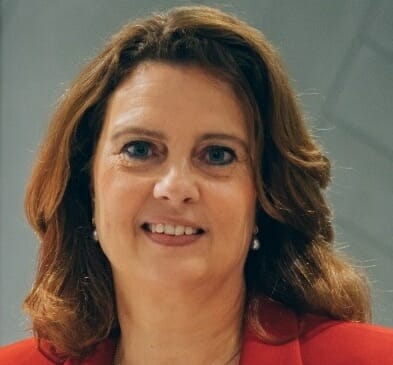As we emerge from the pandemic, issues like inflation, geopolitical tensions, and disrupted supply chains are putting a damper on economic recovery. As Malaysia entered the endemic stage this year, moderate growth can be expected for 2023, following slightly dampened sentiments from enterprises and consumers amid the continuous economic and political instability in the country. Now is an opportune time for businesses in Malaysia to assess their strategy in preparation for the new year.
Enterprises today are walking a fine line. They need to plan and spend judiciously in the short-term to ensure profitability, while simultaneously taking big bets that will pay off in the long-term when we emerge from the bear market. In effect, organizations aren’t just planning for 2023 but also for 2030!
A crucial question that businesses need to ask themselves is: What’s Next?
What’s next with respect to customer needs? What’s next for product innovation? And what’s next for the business as a whole?
While exploring this vast unknown is a daunting task, companies that can effectively cut through will be primed to emerge from the pandemic stronger and more resilient.
Technology – the great equalizer
In the short-term, technology has played the role of an enabler that kept businesses operating during the crisis by enabling remote work, agile business, and external digital engagement. In the long-term, organizations will need to leverage technology to underpin every single process, initiative or value chain as they journey to become the Future Enterprise.
Smart enterprises today will re-prioritizing to invest in digital-first customer engagements, process automation and augmentation, data and analytics, and agile DevOps drive innovation in new business and operating models.
As we move ahead, digital will be the equalizer that will fast-track organizations’ path to recovery and lead Future Enterprises to be platform-enabled, ecosystem-centric, and innovation-driven.
Building a resilient business
The pace of change in Asia Pacific is both daunting and exciting. In the last few years, digital disruption has made nearly every industry sit up and re-evaluate their strategy.
The organizations that were already well into their digital transformation journey managed to overcome evolving challenges with greater efficiency and improved productivity. In addition, organizations with a reliable digital foundation were also able to minimize pandemic induced disruption.
Open source is crucial for building a digital foundation that will help organizations minimize such disruptions with improved resiliency and customer experience in the future.
For instance, one example is Red Hat’s work with PERKESO, who needed to modernize its claims platform to better serve its customers. Using Red Hat solutions, it created new digital business workflows and replaced its legacy architecture with a custom application running on Red Hat Enterprise Linux (RHEL) and integrated using Red Hat Fuse.
With its new custom application running on RHEL, 400,000+ of Malaysia’s employers can now use PERKESO’s digital channels to submit payments and contributions, and employees can now access their social security information online. This has boosted online engagement by 90 percent and reduced service time to market from months to days. This has also resulted in about 75 percent fewer manual processes, allowing PERKESO to offer more efficient, accessible online services to their users.
A resilient digital infrastructure the foundation of innovation
Future Enterprises need a modern digital infrastructure that is flexible, agile, and infinitely scalable to deliver digitally enabled products, services, and pervasive experiences.
According to IDC ICT Predictions, more and more enterprises in Asia are heading towards their digital-first state. By 2023, one in three companies will generate more than 30% of their revenues from digital products and services, as compared to 1 in 5 in 2020.
In order to achieve this state, it is essential that People, Processes and Technology be aligned. Open source can pave the way as the innovation driver as it brings together people with diverse experiences to work together to solve a common challenge and spark new ideas.
In Malaysia, Bank Islam Malaysia Berhad (Bank Islam), the winner of the Red Hat APAC Innovation Awards 2022, aims to continue delivering a high level of satisfaction for their customers through their digital banking services and solutions.
To provide business continuity for its digital banking platforms while also minimizing the resources incurred and downtime, the bank needed to carry out legacy disaster recovery and failover procedures, while also automating their IT service delivery to accelerate business operations with reduced risk, addressing their user experience and resource challenges. They leveraged a variety of open source solutions including, Red Hat Ansible, Red Hat Enterprise Linux along with services from Red Hat Training and Certification and Red Hat Consulting to automate key IT service operations and to strengthen their system’s overall resilience. The implementation of Red Hat’s automation solutions reduced system downtimes, improved customer retention, and freed up their IT teams to focus on producing new and innovative products for customers. This is a great demonstration of how businesses can future-proof and innovate, while also making room to improve its quality of services and provide continuity for customers.
While the world is now firmly anchored in a digital-first economy, the economic and business outlook for the next few years remains highly fluid because of a growing range of global and macro-economic challenges. An enterprise’s success in the next 12-36 months will be defined by how well it navigates these crosswinds.
It’s time to ask: What’s next?
By Marjet Andriesse, Senior Vice President and General Manager, Red Hat APAC









